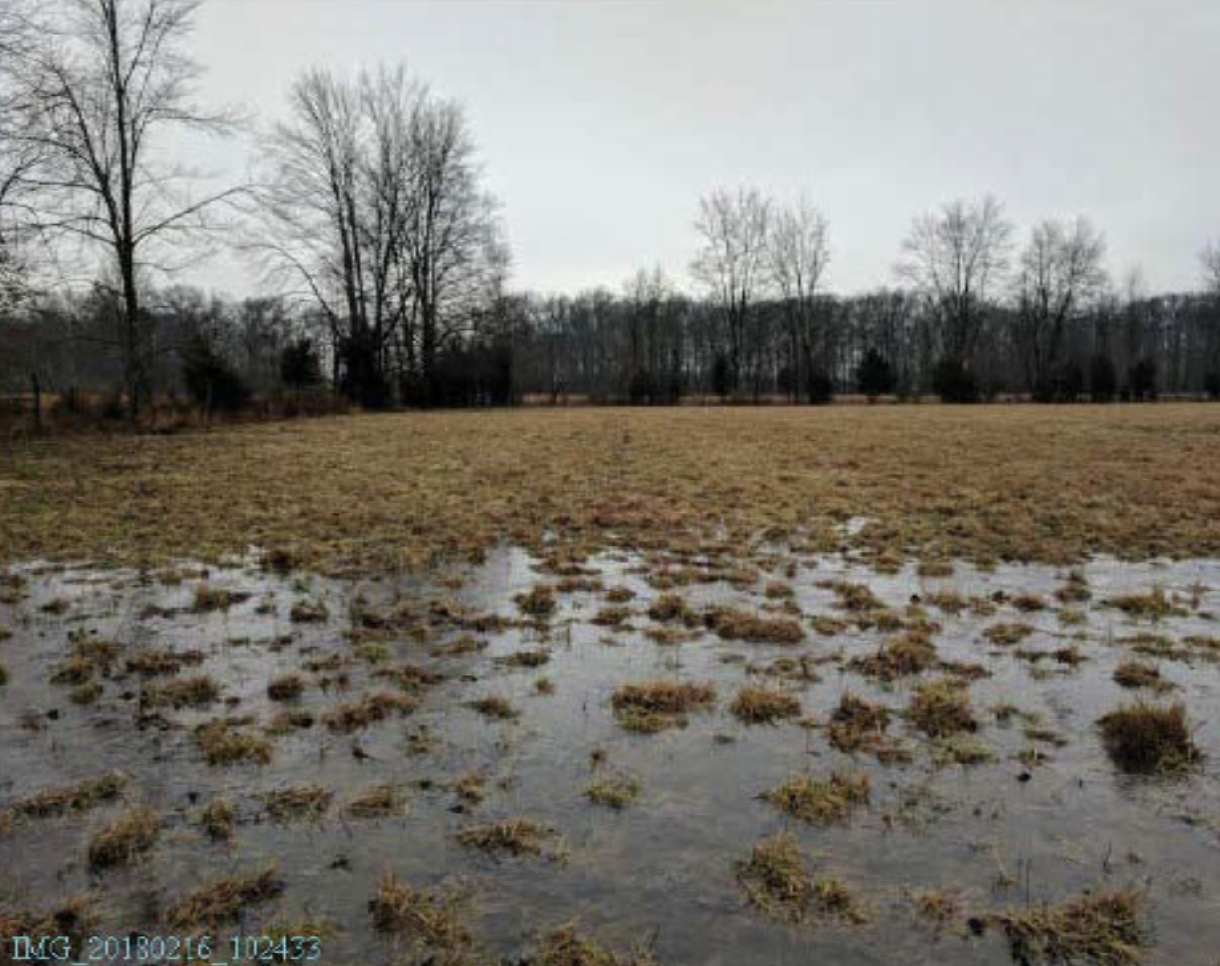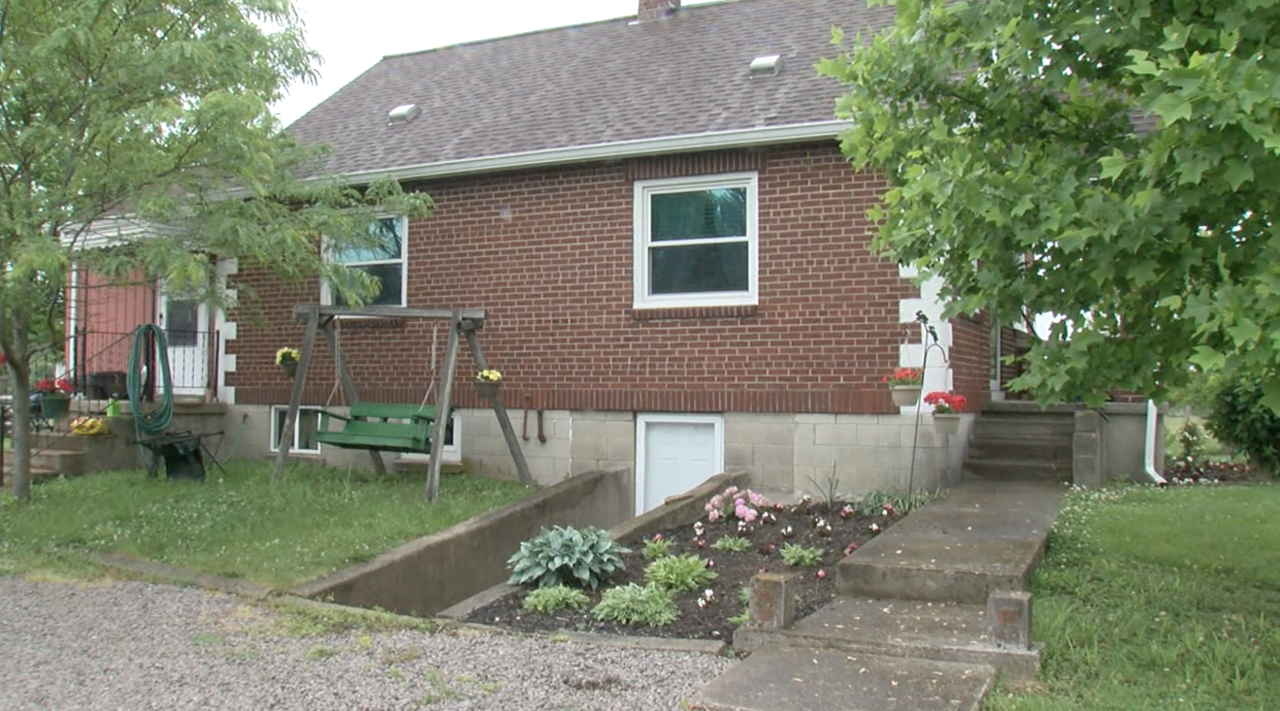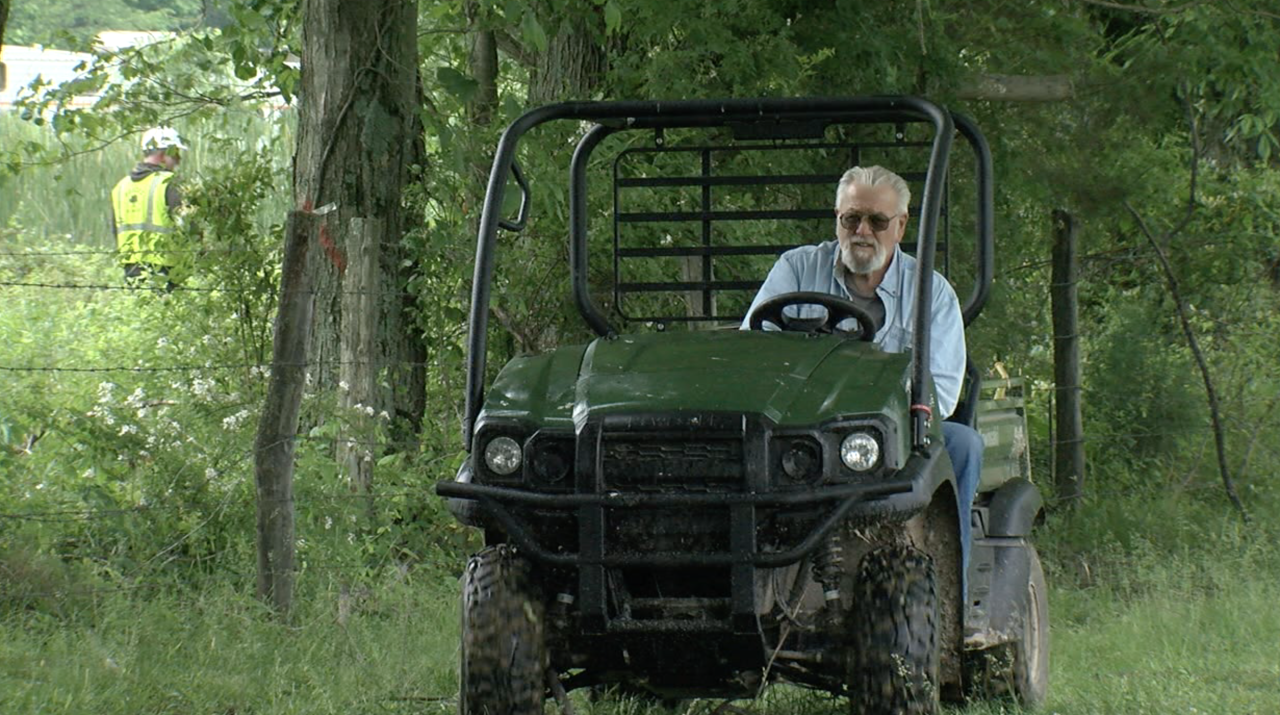BETHEL, Ohio — Tom Brown raises Black Angus cattle on 60 acres of family land near Bethel. The fields are surrounded by a thick line of mostly maple trees that were planted during World War II, when wire fencing was scarce.
His land is now known as ground zero for the Asian longhorned beetle problem in Clermont County, he said, because maple trees are a main food source.
Brown remembered seeing the large black beetles with white spots for the first time – climbing on his home window screens a decade ago. He had no idea that those strange-looking bugs with long curling antennae would eventually cost him his retirement pension savings, his farmland, his cattle herd, and his wife’s health.
“Water bugs," Brown said. "That’s just what we thought it was."

State and federal agriculture agents identified the bug as the destructive wood-boring beetle in 2011 and put large portions of Clermont County under quarantine. Only four areas in the nation are currently under quarantine for the beetles, and one of them is Tate Township, where Brown lives.
Brown believes the beetles arrived years earlier on wooden skids used to transport steel that a former neighbor imported from Asia to manufacture farm equipment. Brown later bought that land to expand his farm.
When the U.S. Department of Agriculture discovered the beetles in Clermont County, they hired a local tree company to cut down thousands of trees to stop their spread – including 400 trees from Brown’s land in 2012.
Those trees along Brown’s fence line formed a natural barrier in the watershed between his land and the farms upstream. The impact of their removal was devastating. Storm water runoff now pools in fields as standing water. Deep ruts from where crews dragged heavy trees scar his fields and turn into raging streams after heavy rains.

Brown has gotten stuck in mud, along with his cattle. His basement has flooded more than 150 times, causing mold, and his wife to develop breathing problems. He’s had to replace the roof on his barn and his home several times, due to damage from heavy winds that the tree line used to block.
“It’s disastrous what the federal government can do to a man’s farm, with no explanation. No recourse,” Brown said. “They just come in and do what they want.”

Crews also caused his cattle to escape from a field. One was hit by a car and later put down, Brown said. He’s had to reduce the size of his herd and spend $25,000 to build a concrete pad so the cattle have dry footing.
“The erosion, the uncontrollable water. It’s just terrible what they’re doing, with no recourse,” Brown said.
Brown said the USDA-hired tree crews told him they would repair his land after they finished removing trees in 2012, but never did.
“They were told from the beginning that there would be efforts made to remediate any consequences that occurred from taking out the trees. It just was never done,” said Amy Hunt, who is Brown’s attorney in his fight against the state and federal government, along with Brian O’Connell.

“They have this bureaucratic mentality of we don’t have to, it’s not in the budget,” O’Connell said. “We’re not going to do it. We don’t have to do it. We’re the government.”
Now the USDA wants to remove an additional 1,300 trees from Brown’s land – including 1,268 healthy trees. Brown has refused. He fears it will deforest his land and could make his fields unsuitable for farming.
“The Browns don’t want a single dollar out of this; they just want to make sure their property is taken care of,” O’Connell said. “We don’t oppose the program; we see the value of it. We know the infested trees need to go … but be sensitive to the impact you’re having on us.”

If Asian longhorned beetles were to become established in the United States, it could become one of the most destructive and costly species ever to enter the country, Phil Baldauf, Ohio's director of the eradication program for the USDA, wrote in an April court affidavit.
“The beetle threatens urban and suburban shade trees, recreational resources such as parks, and forest resources and wildlife. It could also impact industries such as maple syrup production, hardwood lumber processing, nurseries, and tourism,” he wrote. “As of July 2019, ALB (Asian longhorned beetle) has already led to the loss of more than 180,000 trees in Ohio, Massachusetts, New York, New Jersey, and Illinois.”
The USDA declined an interview for this story. In a written statement, a spokeswoman wrote, “Removing ALB-infested trees and nearby ALB high-risk host trees is critical … because leaving a single infested tree could serve as a reservoir for new infestations.”

The USDA has successfully eradicated the beetle, which is native to Asia, from quarantined areas in Illinois, New Jersey and New York City.
In Ohio, the agency eradicated the beetle from Stonelick and Monroe townships in 2018. Currently, most of the infested trees in Ohio are in Tate Township, “where we continue to make steady progress,” wrote USDA spokeswoman Rhonda Santos.
“Our program relies on homeowners and property owners providing access to their property so we can inspect their trees for signs of ALB infestation. When access is prevented by a property owner, infestations can spread,” Santos wrote. “We take steps to ensure that we respect personal property and land and to leave it as it was when we arrived.”

Armed U.S. Marshals arrived unexpectedly at Brown’s property on March 8 with a search-and-seizure warrant for trees on his land and a neighboring parcel owned by his sister, Donna Bowen. Tree crews cut down 32 healthy trees in 90 minutes – none of which were infested with the beetle, according to court documents.
Then a federal magistrate withdrew the warrant and put a stop to the cutting, according to court documents.
Now the dispute is in front of U.S. District Court Judge Tim Black, who is trying to broker a compromise.
For now, Brown has agreed to let agriculture agents cut down 34 infested trees. He is also allowing agents to survey the trees on his property and cut down 30 additional trees if they find infestations.

But Brown is refusing to allow crews to cut down healthy trees unless state and federal agriculture agencies repair past and future damage to his land, he said.
“I’m going to leave my grandkids a swamp that’s no good for nothing that I don’t even think I could get out what I invested in it, back,” Brown said.
This isn’t the first time Brown has been in court. The Ohio Department of Agriculture sued him in Clermont County Court of Common Pleas in 2016 to gain access to his property to survey for beetles and cut trees.

Brown filed a counterclaim against ODA for past damages to his land from the 2012 tree removal.
At the end of a 2019 bench trial, Judge Victor Haddad said, “I want the Browns to know, because they’re members of this community, this is a difficult case. It’s difficult because the court, at this point, is convinced your property has been damaged by what happened on your property. That’s not the only issue here,” according to a court transcript.

The judge dismissed Brown’s countersuit on a legal issue – ruling that Brown had sued the wrong party for damages – because the U.S. Department of Agriculture, and not the Ohio Department of Agriculture, had signed the contract with the tree removal company and was responsible for the tree cutting. The two agencies are working together to eradicate the beetles.
The judge gave Ohio agriculture agents permission to come onto Brown’s property to survey the trees for beetles. But he did not grant future permission to cut down trees, O’Connell said.

That is now the issue at stake in federal court, where a judge must decide who has the final say over the fate of Brown’s healthy trees.
Brown has already spent $400,000 on legal bills, raiding his pension and forcing him to go back to work as a truck driver after years of retirement, he said.
“I’m convinced that you don’t own your property. If they want to come in and take it, they take it,” Brown said.
Brown’s lawyers say this case should be a frightening warning.
“This could happen to any property owner in Ohio. I mean it could happen to anybody,” Hunt said.






